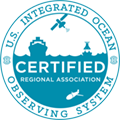Coastal & Marine Spatial Planning
Coastal and Marine Spatial Planning (CMSP) is a comprehensive, transparent, adaptive, and science-based process to analyze and allocate the spatial and temporal distribution of human activities in marine areas. Current and future ecological, economic, and social objectives identified through the planning process are addressed to reduce environmental impacts, align management decisions, facilitate compatible uses and reduce conflicts among users, among others. In practical terms, CMSP provides a public policy process for society to better determine how these areas are sustainably used and protected – now and for future generations. Successful management of the marine environment needs to be based on the best available science and will require continual information gathering to establish baselines, monitor ecosystems, and evaluate the efficacy of marine spatial plans.

Additional Resources
White House, National Ocean Council
NOAA Coastal and Marine Spatial Planning Portal
Consortium for Ocean Leadership: Science Requirements for Marine Spatial Planning
United Nations Educational, Scientific, and Cultural Organization (UNESCO) Marine Spatial Planning Initiative
Related NANOOS Products
NANOOS Asset List
Inventory of NANOOS assets.
NANOOS Visualization System (NVS)
The NANOOS Visualization System (NVS) provides easy access to forecast and observation data across a wide range of assets such as buoys, shore and land stations, high-frequency radar, and satellites.
Tsunami Evacuation Zones
Interactive tsunami inundation maps developed for Oregon and Washington coastlines, accessible through the NVS Tsunami Hazards Portal.
Oregon Coastal Atlas
Information for different coastal systems, access to interactive mapping, online geospatial analysis tools, and direct download access to various planning and natural resource data sets relating to coastal zone management.
Washington Coastal Atlas
Relevant information for use in coastal and shoreline resource planning and management. Information provided includes: locations of public beaches; location of beach closures; and an interactive coastal map.
NANOOS members involved in this effort include:
Oregon Dept. of Land Conservation and Development (ODLCD)
DLCD's Oregon Ocean Information Website
Oregon Dept. of Geology and Mineral Industry (DOGAMI)
| National Observing System Partners Alliance for Coastal Technologies (ACT) Southeastern Universities Research Association (SURA) Integrated Ocean Observing System IOOS | |||||||

